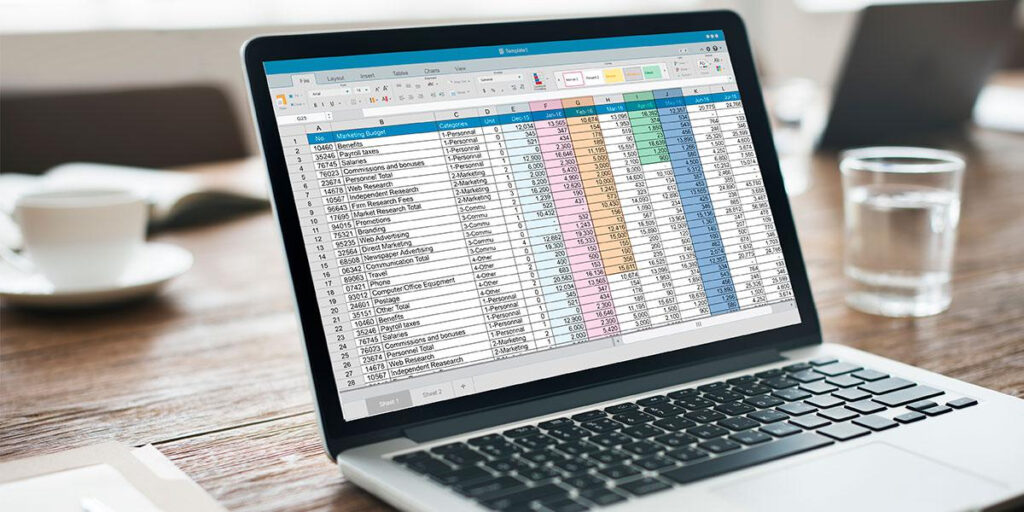In today’s complex financial landscape, having a clear understanding of your personal or business finances is crucial. One of the most effective tools for achieving this clarity is a well-designed financial spreadsheet.
A financial spreadsheet serves as a centralized hub for tracking income, expenses, investments, and overall financial health. By organizing your financial data in a structured format, you gain the ability to analyze trends, make informed decisions, and set realistic financial goals.
The power of a financial spreadsheet lies in its flexibility and customizability, allowing you to tailor it to your specific needs and financial situation. Whether you’re an individual looking to manage personal finances or a business owner aiming to keep track of company expenditures, a robust financial spreadsheet can be an invaluable asset in your financial toolkit.

Laying the Foundation: Essential Components of a Financial Spreadsheet
The first step in creating an effective financial spreadsheet is to identify and include the essential components that will form its foundation. At its core, a comprehensive financial spreadsheet should include sections for income tracking, expense categorization, savings goals, and debt management. The income section should allow for the input of various revenue streams, whether it’s a regular salary, freelance income, or investment returns.
The expense section should be detailed, breaking down costs into categories such as housing, transportation, food, utilities, and discretionary spending. It’s crucial to include both fixed and variable expenses to get a complete picture of your financial outflows.
A well-structured savings section can help you visualize progress towards specific financial goals, such as an emergency fund or a major purchase. Lastly, a debt management component allows you to track outstanding balances, interest rates, and payment schedules for any loans or credit card debts.
By incorporating these essential elements, you create a solid framework for your financial spreadsheet that captures all aspects of your financial life.
Advanced Features: Enhancing Your Financial Spreadsheet
Once the basic structure is in place, you can enhance your financial spreadsheet with advanced features to provide deeper insights and more sophisticated analysis. One valuable addition is a budget forecasting tool that allows you to project future income and expenses based on historical data and anticipated changes.
This can help you plan for upcoming expenses or estimate the impact of financial decisions. Another useful feature is an investment tracker that monitors the performance of various assets, calculates returns, and helps with portfolio rebalancing. For those focused on debt reduction, incorporating a debt payoff calculator can illustrate different repayment strategies and their long-term impact.
Additionally, creating visual representations of your financial data through charts and graphs can make complex information more digestible and highlight important trends. These advanced features transform your spreadsheet from a simple ledger into a powerful financial planning and analysis tool.
Customization and Flexibility: Tailoring Your Spreadsheet to Your Needs
One of the greatest strengths of a financial spreadsheet is its ability to be customized to fit your unique financial situation and goals. As you develop your spreadsheet, consider incorporating sections that are particularly relevant to your circumstances.
For example, if you’re a freelancer or small business owner, you might include sections for tracking billable hours, client invoices, and tax obligations. If you’re focused on retirement planning, you could add components that project long-term savings growth and estimate future expenses.
For those managing family finances, sections for tracking children’s expenses, education savings, or family budget allocations might be beneficial. The key is to create a spreadsheet that evolves with your financial journey, adding or modifying sections as your needs change. This flexibility ensures that your financial tool remains relevant and useful over time, adapting to new financial goals or life circumstances.
Implementing Best Practices for Accuracy and Efficiency
To maximize the effectiveness of your financial spreadsheet, it’s important to implement best practices for data entry and maintenance. Consistency is key – establish a regular schedule for updating your spreadsheet, whether it’s weekly, bi-weekly, or monthly.
This habit ensures that your financial data remains current and reliable. When setting up formulas and calculations, double-check their accuracy and use cell references rather than hard-coded numbers to reduce errors. It’s also wise to create a backup system, either through cloud storage or regular local backups, to protect your financial data.
Consider using data validation techniques to prevent incorrect entries and maintain data integrity. For complex spreadsheets, it can be helpful to create a separate sheet that explains the structure and any complex formulas used. This documentation not only serves as a reference for you but also makes it easier to share the spreadsheet with financial advisors or family members if needed.
Leveraging Technology: Integrating Your Spreadsheet with Financial Tools
In today’s digital age, your financial spreadsheet doesn’t have to exist in isolation. Consider integrating it with other financial tools and technologies to streamline data collection and enhance its functionality. Many banks and financial institutions offer the ability to export transaction data directly into spreadsheet formats, which can significantly reduce manual data entry.
Exploring add-ons or plugins for your spreadsheet software can also extend its capabilities, offering features like automatic currency conversion, stock price updates, or connections to budgeting apps.
For those comfortable with more advanced technology, learning basic scripting or macros can automate repetitive tasks and create custom functions tailored to your specific needs. By leveraging these technological integrations, you can create a more dynamic and efficient financial management system that saves time and reduces the potential for errors.
Conclusion: Empowering Your Financial Journey
Creating a comprehensive financial spreadsheet is more than just an exercise in number-crunching; it’s a powerful step towards taking control of your financial future. By diligently tracking your income, expenses, savings, and investments in a well-organized format, you gain invaluable insights into your financial habits and opportunities for improvement.
A well-designed spreadsheet serves as both a mirror reflecting your current financial status and a roadmap guiding you towards your financial goals. Remember that the process of building and maintaining your financial spreadsheet is an ongoing journey.
As you become more familiar with your financial data, you’ll likely discover new ways to refine and expand your spreadsheet to better serve your needs. Embrace this process of continuous improvement, and let your financial spreadsheet evolve into a personalized tool that not only tracks your finances but also empowers you to make informed decisions and achieve your financial aspirations.



